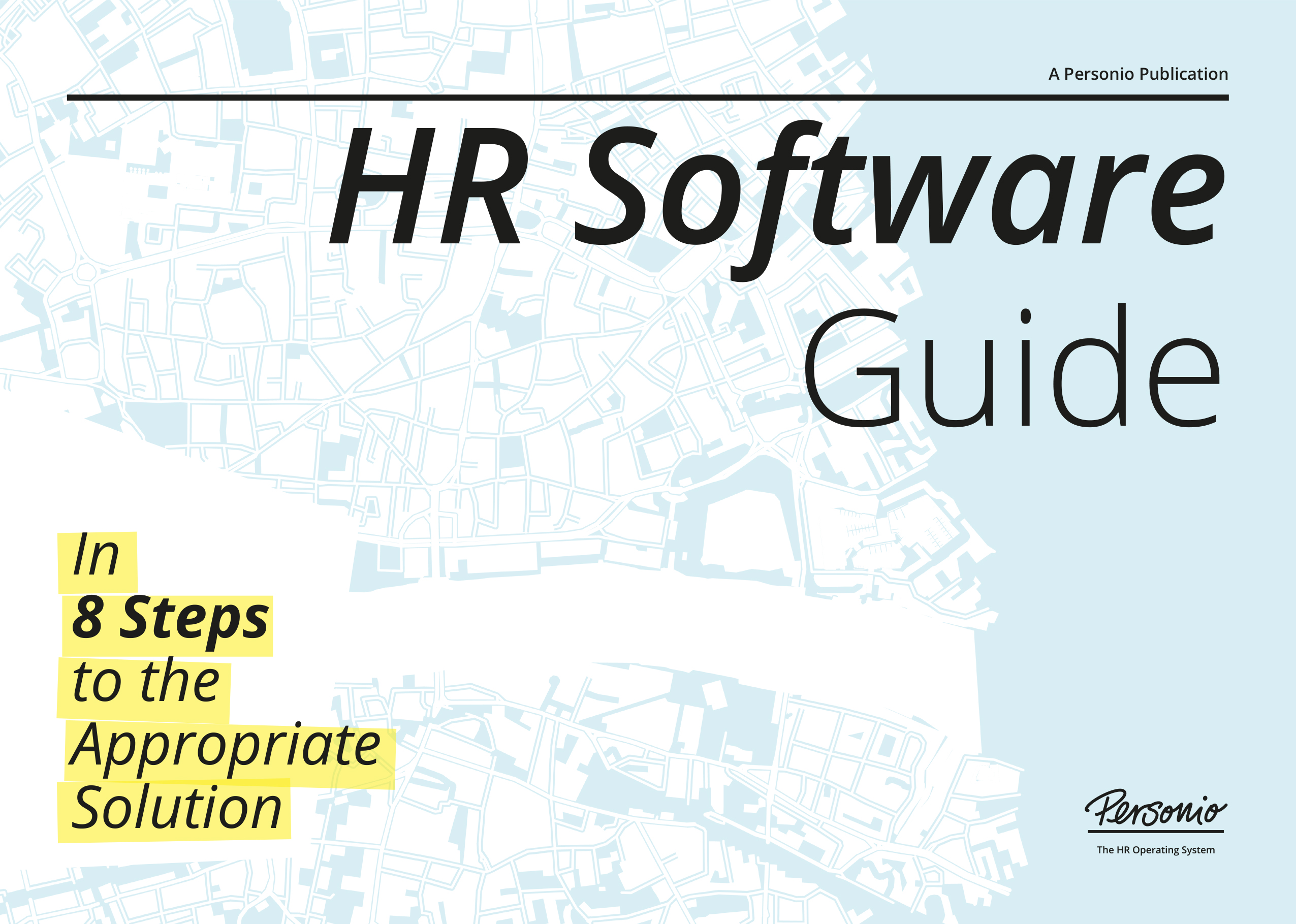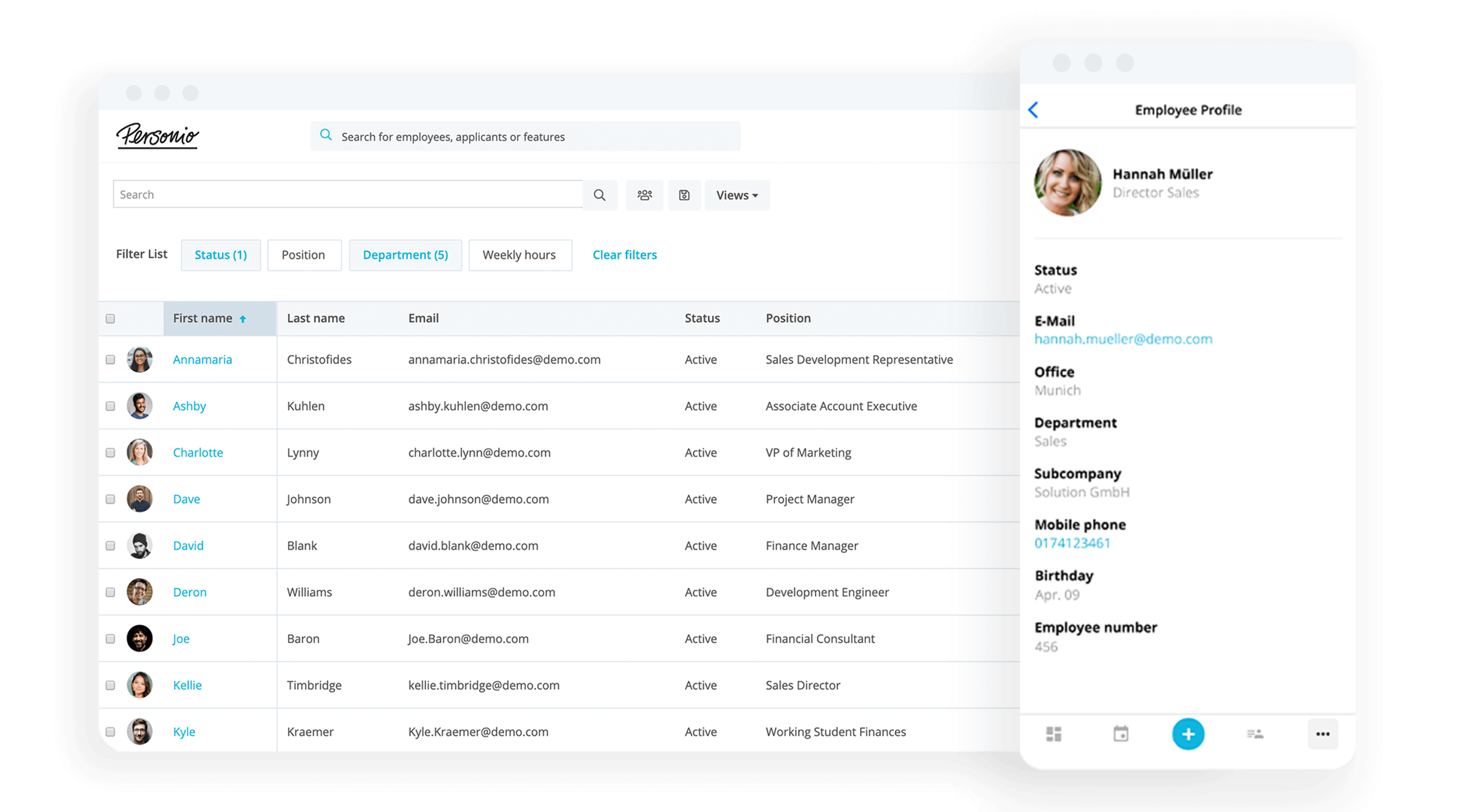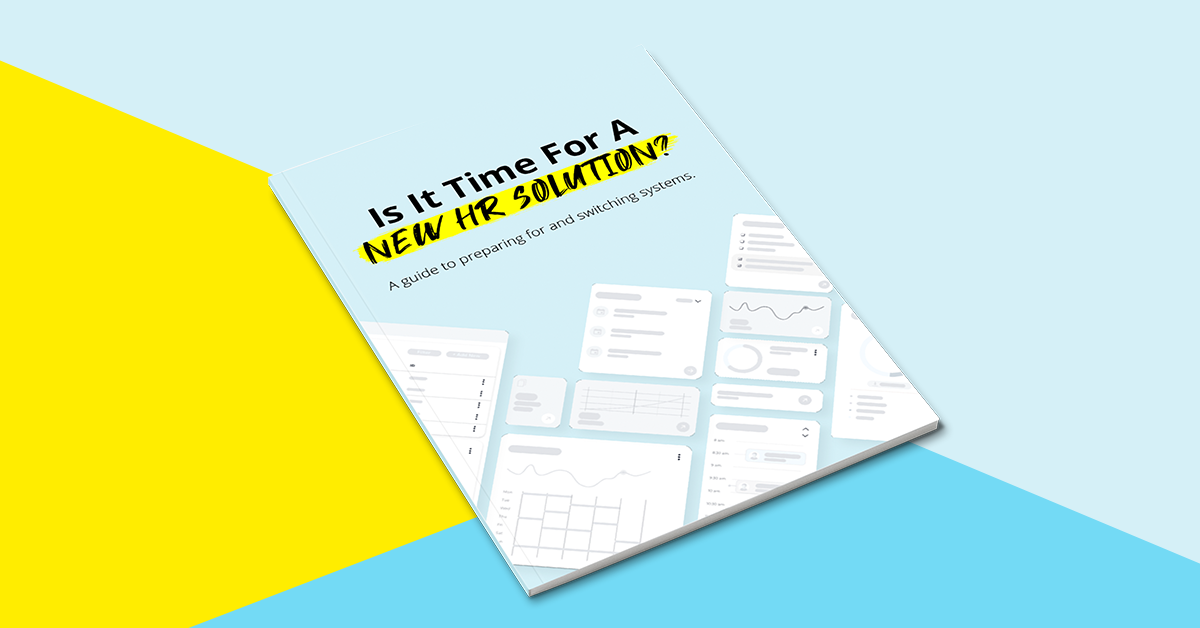Did you know? An HRIS implementation can make or break a new HR system. Meaning that, if you don’t have the right implementation plan in place, you may be losing out on the opportunity for your organization, and your business, to be as productive as possible from day one. In this article, we’ll help you sketch out your next great HRIS implementation plan.
Keen to consider your options? Here’s what should go into an HRIS switch.
Contents
What Is HRIS Implementation?
How Can HR Teams Prepare For HRIS Implementation?
How Long Does HRIS Implementation Take?
5 Key Ways To Optimize Your HRIS Implementation Process
How Can An HRIS Contribute To Company Success?
What Is HRIS Implementation?
The HRIS implementation process consists of transitioning from one human resource information system (HRIS) to another (or ‘transitioning from scratch,’ where no system existed before to implementing one for the first time).
What Is The HRIS Implementation Process?
The process, as a whole, consists of some familiar stages, including:
| Step | Explained |
|---|---|
| Designing | Deciding on the ideal solution for your organization's needs. |
| Building | Moving employee data or inputting it into your new HRIS. |
| Testing | Ensuring that your new system makes the grade for your team. |
| Rolling Out | Introducing your wider organization to your new system. |
| Iterating | Receiving continued support to help your new HRIS match your changing needs. |
Thought of in this way, it’s easy to understand why HRIS implementation is definitely more of a holistic process. There are so many moving pieces, that it really helps to have an idea of the entire process from the very beginning.
How Can HR Teams Prepare For HRIS Implementation?
The first step in implementing a new tool is ensuring you have the right tool in the first place. Especially with the responsibility that comes with introducing a new HR tool to your workforce, HR leaders need to understand the kind of digital transformation they want to undergo.
Here are two key questions to keep top of mind:
- Does your team know what they need from an HRIS?
- Have you tested and understood the tool completely?
Let’s dive a bit deeper into each of these questions…
1. Does Your Team Know What They Need From An HRIS?
HRIS implementation varies from tool to tool, but the first thing you need to do is understand whether you’re going to get everything you need from an incoming HRIS. Ask yourself some of the following:
- Are you looking to digitize your administrative tasks?
- Do you need a digital solution that helps recruit top talent?
- Would you rather have many complex functions or a user-friendly interface?
It’s not just about the individual questions, though, but about the collective needs of your HR team and what a tool would be able to provide. In that sense, it helps to think about what you need today, what you might like, and what you might need or like in the future. Any prospective tool should have a little bit from each column.
Our Guide To Choosing A Proper HRIS

2. Have You Tested And Understood The Tool Completely?
You can only find out if an HRIS is right for your team by trying it out! To adequately prepare for any prospective HRIS implementation, take the time to test and involve stakeholders (executives, managers, employees) who would theoretically work with any incoming tool. A proper HRIS vendor will also afford you the chance to take their software for a spin, too.
How Long Does HRIS Implementation Take?
At Personio, it takes, on average, around six weeks to implement an entirely new HRIS. Of course, this may vary depending on the needs of the company or how things stood before, but a proper implementation process is always well mapped out and transparency is key when it comes to any customer and their HRIS vendor.
Of course, this also relies on a variety of factors unique to an HRIS, which may include:
- Technical Requirements – A strong HRIS will be user-friendly so that anyone on your HR team (or across your organization) can use it with ease. No massive technical requirements or background knowledge is required, all it takes is a few lessons and you’re up and running!
- Implementation Support – Even the best HRIS will flounder if the implementation process isn’t designed specifically to support both it and an organization. At Personio, we place particular emphasis on the implementation process, with outlined steps and timeframes for maximum transparency for new customers.
- Employee Self Service (ESS) – Employees being able to add their own data to an HRIS is a boon for HR teams everywhere, because the input process can be outsourced while still keeping a very high bar of quality. An HRIS with an ESS function is helpful because it can reduce the data transfer time drastically.
HR Best Practice: The best thing an organization can do, after having chosen a great HRIS, is plan specific resources around implementation. Who will lead the project? Who else will be involved? And try to plan around at least six weeks of dedicated time to help make it a reality (and to avoid things lagging for too long).
How Does Data Migration Work During HRIS Implementation?
Every company already has all the data they need at their disposal, it just depends on where it’s located. Sometimes in Excel, scattered across emails, or in an older system that needs refreshing. Data migration is a pressing topic for HR teams during the implementation phase, so it helps to outline how it works.
First and foremost, the data migration phase during HRIS implementation doesn’t have to go from 0 to 100. It can be done gradually and over time, and likely should be done with the help of ESS (again, another key requirement of a great HRIS).
The time required for data migration, overall, will depend generally on:
- The size of the company
- The complexity of the chosen HRIS software
- The quality of current data
Data migration with Personio takes an average of four to eight weeks, from start to finish. During this time, HR and employees can continue to work normally, but it’s the kind of up-front investment that truly pays dividends in the long run.
Here’s an example: A recent customer has almost 1,000 employees, and the entire implementation (including data migration) was completed in six weeks flat. From then on, everything worked in the new system!
Get To Know Personio During A Free Trial
Get familiar with Personio’s HRIS solution and find out if it’s the right one for you during a 14-day free trial. Click the button below to kick yours off today.
5 Key Ways To Optimize Your HRIS Implementation Process
What are some of the ways that HR teams can optimize the HRIS process? Once you have your new solution chosen, and after knowing all the ins and outs, surely there are some ways to help make sure rollout is smooth.
We’d recommend the following five HR best practices, for your consideration…
- Communication Is Key – It’s not enough to announce that your company is introducing a new solution. Make a big deal of it, lay out the benefits for every employee, and share your goals with management! A new HR software can, and should, benefit absolutely everyone, so communicate how that is the case.
- Take A Top-Down Approach – Talk to managers and key stakeholders first, and then address the entire workforce. Gain the support of leadership and align with them, because it will make the implementation that much stronger — this will increase adoption and engagement rates because employees will feel expected to participate.
- Define Roles & Rights – A great HRIS will offer different kinds of users and permissions, as is the case with Personio. Before implementation really gets going, start to identify roles in your company and what they should be allowed to do with regards to approvals and people processes. Have it sketched out but not finalized.
- Involve Other Departments – Make sure that departments in your company have a seat at the table during the implementation phase (even if it’s during a bi-weekly alignment meeting, for instance). Finance, office management, and others will want to feel part of the process, so you should communicate actively and involve them.
- Build A Project Plan – Your HRIS’ implementation team will have a plan that covers the nuts and bolts, but your organization should also devise a project plan that helps sketch out the entire process from start to finish (making note of key dates, decisions, and communication points with the entire company).
Keeping each of these in mind should help ensure a smooth implementation process, for all involved!
How Can An HRIS Contribute To Company Success?
There’s a myriad of reasons why an HRIS is beneficial to company success. But, as part of the HRIS implementation process, your team should really review the benefits and track them over time.
To do this, involve colleagues to give direct feedback on working with your new solution. This can be a staggered process and might differ between employee types and timeframes. Let’s consider this HRIS feedback framework:
| Employee Type | Timeframe |
|---|---|
| HR Employees | After A Few Weeks |
| Managers | After A Few Months |
| All Employees | After Around Six Months |
Schedule fixed feedback meetings with different groups and ideally align the feedback with your goals. This way you can evaluate to what extent the implementation was successful.
From The Field: Feedback from our own customers at Personio finds that the majority of them benefit in the medium and long term from greater process clarity, automation, data storage, and overall quality. It also helps ‘raise the organizational profile’ of HR in the eyes of a company. And, it can all be driven by a great implementation process.
How Implementation
At Personio Works






